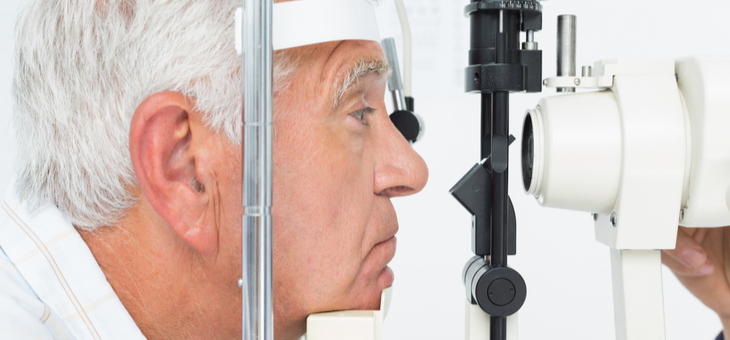When the supply of blood to your brain is interrupted, you may experience a stroke. This may occur when an artery is blocked (an ischaemic stroke) or bursts (haemorrhagic stroke), limiting essential oxygen and nutrients from reaching the brain.
Every 10 minutes, an Australian will have a stroke. High cholesterol affects 6.1 million Australians, a risk factor associated with stroke, and 434,000 of us have an irregular heartbeat. Other risk factors include smoking, poor diet, obesity or being overweight, alcohol and a lack of exercise.
Many people know the acronym ‘FAST’ when it comes to detecting a stroke. Has their Face dropped? Can they lift both Arms? Is their Speech slurred? Time to call triple zero. But there are more, lesser known giveaways.
There is a range of different signs of stroke, but the eyes can be a key indicator that something isn’t right. People who are experiencing stroke may note the following vision changes:
- double vision
- sudden vision loss or temporary loss of vision in one eye
- an area of your vision is missing (for example, everything on the left side).
If you are experiencing any of the above symptoms, dial emergency services immediately.
It is important to have regular eye examinations as they can help to detect a stroke before it happens. A key early indicator of stroke is blocked arteries. Often white flecks appear in the blood vessels of the eye; your local optometrist would be able to identify these during a routine eye examination.
We recommend regular eye examinations with your local optometrist.
Some of the more common side-effects of a stroke that affects one’s eyesight include:
Eye movement problems. This can occur after having a stroke, as the nerve that controls one’s ability to move the eyes can be damaged. This results in stroke sufferers losing control of their eye muscles. Eye movement problems can be treated with therapy or surgery, depending on the level of damage.
Eye tracking. This is the ability to move your eyes from one point to another in one smooth movement. Often stroke sufferers may experience eye tracking issues.
Vision field loss. This is the inability to see parts of your vision field. This is often a side-effect of having a stroke, as this area of the brain can be damaged. Unfortunately, after a stroke this part of the brain cannot be restored, but you can receive treatment that allows individuals to make the most of the vision they have left.
Dry eyes. This condition often occurs after having a stroke because the muscles in your face and eyelids weaken. Strokes can also cause a sufferer to have difficulty closing their eyes completely, which in turn can also lead to dry eyes. Dry eyes can be remedied by using eye drops, however it is highly recommended you consult your optometrist for expert advice on the best treatment.
How regularly do you have your eyes checked? Have you or someone you know experienced vision changes during a stroke?
If you enjoy our content, don’t keep it to yourself. Share our free eNews with your friends and encourage them to sign up.
Related articles:
https://www.yourlifechoices.com.au/health/your-health/eye-test-to-detect-alzheimers
https://www.yourlifechoices.com.au/health/your-health/risky-eye-health-mistakes
https://www.yourlifechoices.com.au/health/wellbeing/seeing-eyes-loving-natures

